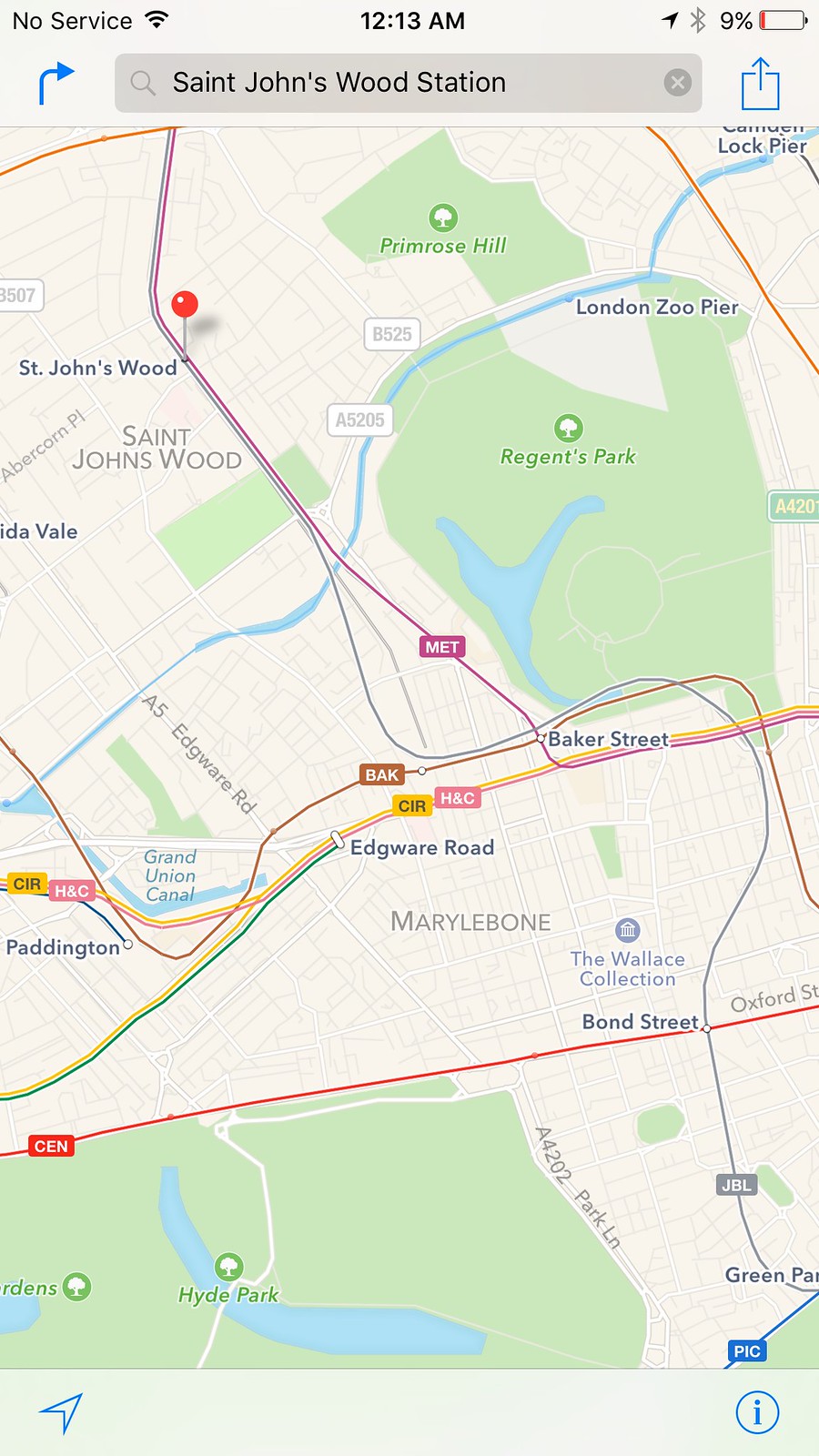|
|
Post by londonstuff on Mar 30, 2016 23:32:26 GMT
Hopefully this is a fairly straightforward one to solve: I was using Apple Maps before to check something on the Jubilee line, between where I live in Victoria and St John's Wood. There are a lot more curves in the line than I'd expect, especially for the modern part of the line where presumably they didn't need to tunnel under public rights of way:  Untitled Untitled by Michael, on Flickr I wondered why: - There's such a massive curve between Baker Street and Bond Street. Obviously it follows the Bakerloo for part of it but wouldn't the extension costs have been much smaller had they run a direct line between the two? - Between Baker and SJW it appears to go right under Marylebone station and not particularly following the Met - again, was there any reason? I'd always assumed that the pipe sticking out of the pond in Regent's Park was an air vent for the tube (seen in the back of the photo below but not taken by me), but perhaps not.  Mr Bird lives in Regent's Park Mr Bird lives in Regent's Park by Christopher Paparisvas, on Flickr |
|
|
|
Post by superteacher on Mar 30, 2016 23:51:36 GMT
I don't believe that these maps accurately show the actual positioning of the tunnels.
|
|
|
|
Post by Dstock7080 on Mar 31, 2016 3:18:05 GMT
- There's such a massive curve between Baker Street and Bond Street. Obviously it follows the Bakerloo for part of it but wouldn't the extension costs have been much smaller had they run a direct line between the two? Wasn't one of the reqirements of the new station tunnels at Baker Street, to provide cross-platform interchange with the Bakerloo ? |
|
|
|
Post by stapler on Mar 31, 2016 6:37:04 GMT
The curve shown on the Bakerloo is of DLR proportions - surely inaccurate!
|
|
|
|
Post by will on Mar 31, 2016 9:13:13 GMT
The reason will be to provide cross platform interchange as well as a crossover between the northbound Bakerloo and westbound jubilee and the same in the other direction obviously. Also wasn't there allready 3 Bakerloo line platforms with 2 southbound platforms resulting in the Jubilee having to follow that path to utilise the existing southbound platform so only 1 platform needed constructing (northbound Jubilee ) before curving quite sharply to Bond Street. Carto Metro shows similar curves carto.metro.free.fr/cartes/metro-tram-london/index.php?station=baker-street |
|
|
|
Post by norbitonflyer on Mar 31, 2016 9:24:28 GMT
- There's such a massive curve between Baker Street and Bond Street. Obviously it follows the Bakerloo for part of it but wouldn't the extension costs have been much smaller had they run a direct line between the two? Wasn't one of the reqirements of the new station tunnels at Baker Street, to provide cross-platform interchange with the Bakerloo ? Remember that the northern section of the Jubilee was built as a branch of the Bakerloo, and therefore had to be aligned with the existing tunnels at Baker Street. The northbound tunnel of the Stanmore branch had to go quite a long way towards Marylebone before the grade separation was sufficient to cross the original Bakerloo tunnels. Although that link is now disused (a new station tunnel was built in 1979), the new alignment Jubilee has to go further west than it might have done otherwise to join up to it. Likewise, the 1979 southern extension had to set off in the direction the 1938 platforms were facing, and couldn't turn south until the grade separation was sufficient to cross over the Bakerloo tunnels. The result is that the n/b and s/b Jubilee in the Baker Street area actually take very different courses. Carto Metro shows it fairly well, although it doesn't show the overlying street plan and some of the 3D complexities are difficult to render on a 2D screen I don't think the Apple map is particularly accurate - look at the "threepenny bit" curves. Other sources (Google maps) show the Bakerloo as running under York Terrace and then curving under the open space of Park Place to line up with Portland Place - a curve that is similar in radius to, for example, the Kennington loop, and much less tight than the one on the Central Line west of Shepherds Bush. |
|
Deleted
Deleted Member
Posts: 0
|
Post by Deleted on Mar 31, 2016 13:06:00 GMT
|
|
|
|
Post by John Tuthill on Mar 31, 2016 13:30:53 GMT
Wasn't one of the reqirements of the new station tunnels at Baker Street, to provide cross-platform interchange with the Bakerloo ? Remember that the northern section of the Jubilee was built as a branch of the Bakerloo, and therefore had to be aligned with the existing tunnels at Baker Street. The northbound tunnel of the Stanmore branch had to go quite a long way towards Marylebone before the grade separation was sufficient to cross the original Bakerloo tunnels. Although that link is now disused (a new station tunnel was built in 1979), the new alignment Jubilee has to go further west than it might have done otherwise to join up to it. Likewise, the 1979 southern extension had to set off in the direction the 1938 platforms were facing, and couldn't turn south until the grade separation was sufficient to cross over the Bakerloo tunnels. The result is that the n/b and s/b Jubilee in the Baker Street area actually take very different courses. Carto Metro shows it fairly well, although it doesn't show the overlying street plan and some of the 3D complexities are difficult to render on a 2D screen I don't think the Apple map is particularly accurate - look at the "threepenny bit" curves. Other sources (Google maps) show the Bakerloo as running under York Terrace and then curving under the open space of Park Place to line up with Portland Place - a curve that is similar in radius to, for example, the Kennington loop, and much less tight than the one on the Central Line west of Shepherds Bush. Don'tforget that the original 'Baker Street and Waterloo railway' had to follow the lines of the streets, as building owners above the line were worried about their foundations, hence some sharp curves, as also on the Central around the Bank. |
|



